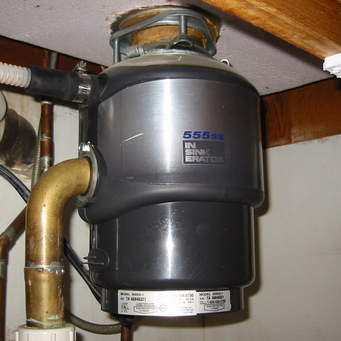May
19
2016

It is not that uncommon over time for a garbage disposal to start leaking water under your sink. Fortunately, this is not a hard fix. The leak can only come from three areas; the sink flange (very top of the disposal), where the waste drain line meets the disposal and where the dishwasher hooks up.
For a leak at the sink flange you will want to unhook the garbage disposal which consists of loosening three screws then rotating the unit counter-clockwise a half-turn. The unit will slip right off and then you just need to remove a snap ring (stick a flat head screw driver in and pop it off) then you can pop the sink flange right out which is sealed to the sink with plumber’s putty. Clean off all of the old plumber’s putty from the sink flange and the sink; also make sure nothing is bent so that the sink flange can sit flush with the sink. Roll some plumber’s putty and make a ring on the sink where the sink flange will sit, then put the sink flange back in place and add pressure. The excess putty will ooze out up top and underneath the sink, clean that away and put everything back together.
For the other two leaks, make sure that all screws and clamps are tight. If they still leak you might need a new hose (only for dishwasher) or pipe. There should be a gasket where the waste drain line hooks up, so make sure that is there as well.
By Admin •
Maintenance Tips •
• Tags: maintenance, Plumbing
 ve small children in your home, make sure one window in each child’s bedroom is easily opened. Children have a tendency to try and open windows instead of breaking them to escape a fire. They are afraid to break windows, because subconsciously they know they will get in trouble, even if they won’t actually. Children often die in fires for that very reason.
ve small children in your home, make sure one window in each child’s bedroom is easily opened. Children have a tendency to try and open windows instead of breaking them to escape a fire. They are afraid to break windows, because subconsciously they know they will get in trouble, even if they won’t actually. Children often die in fires for that very reason.





